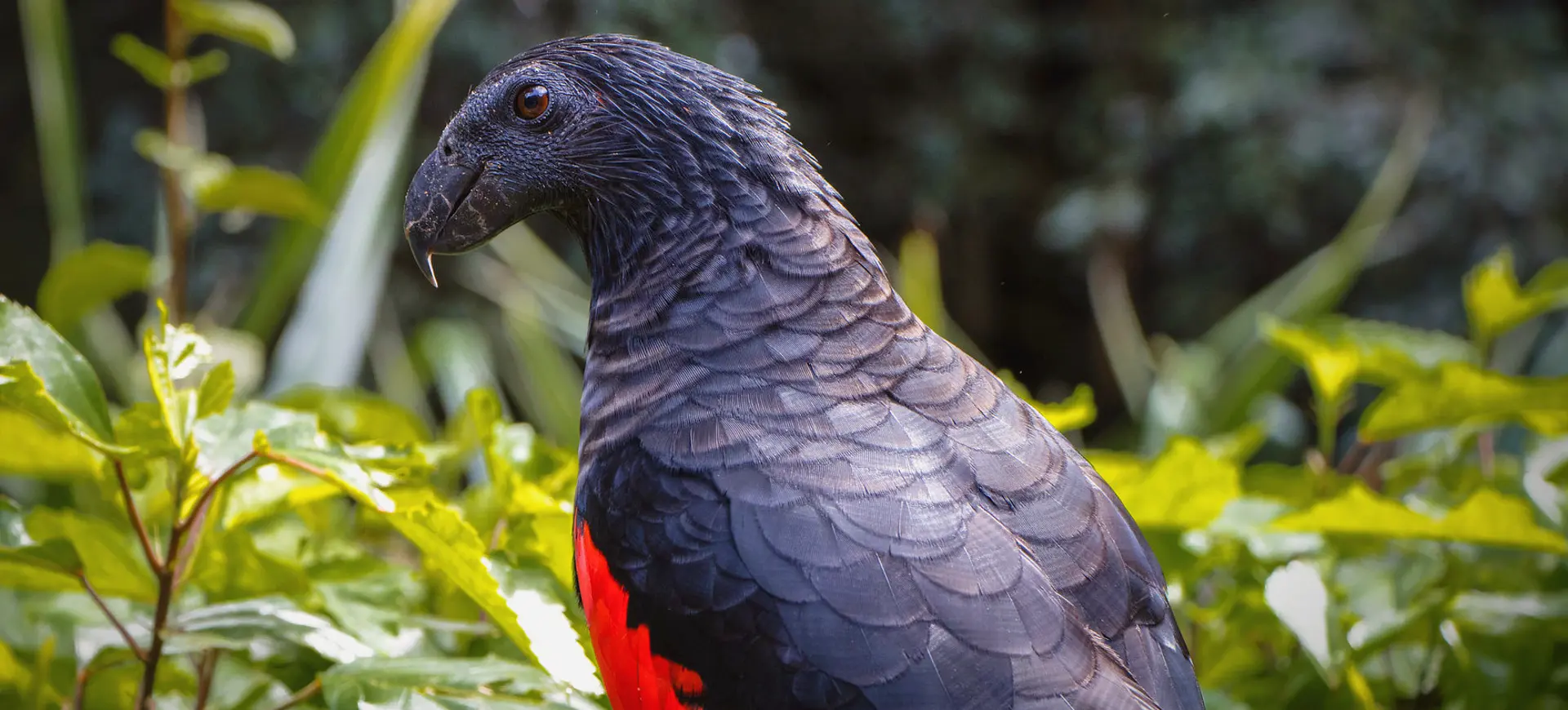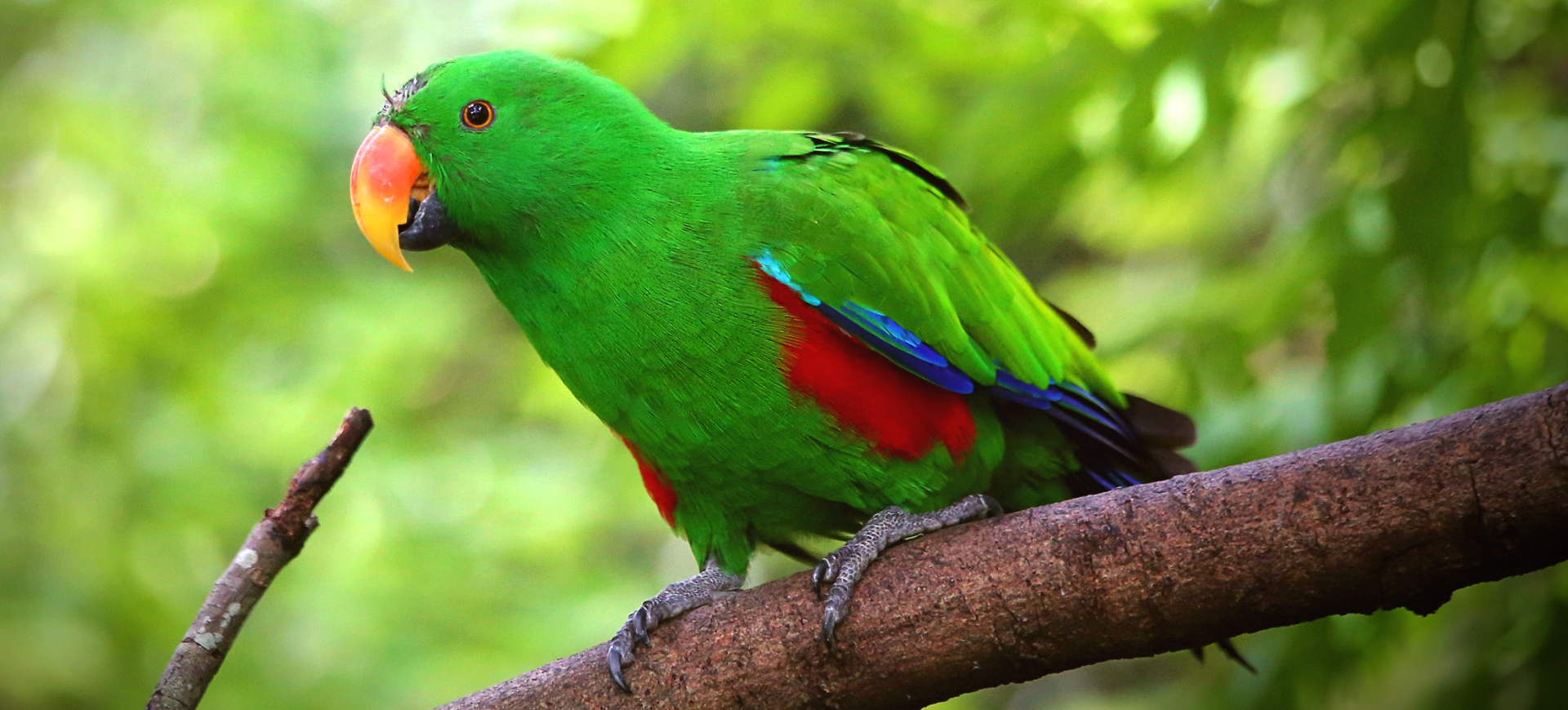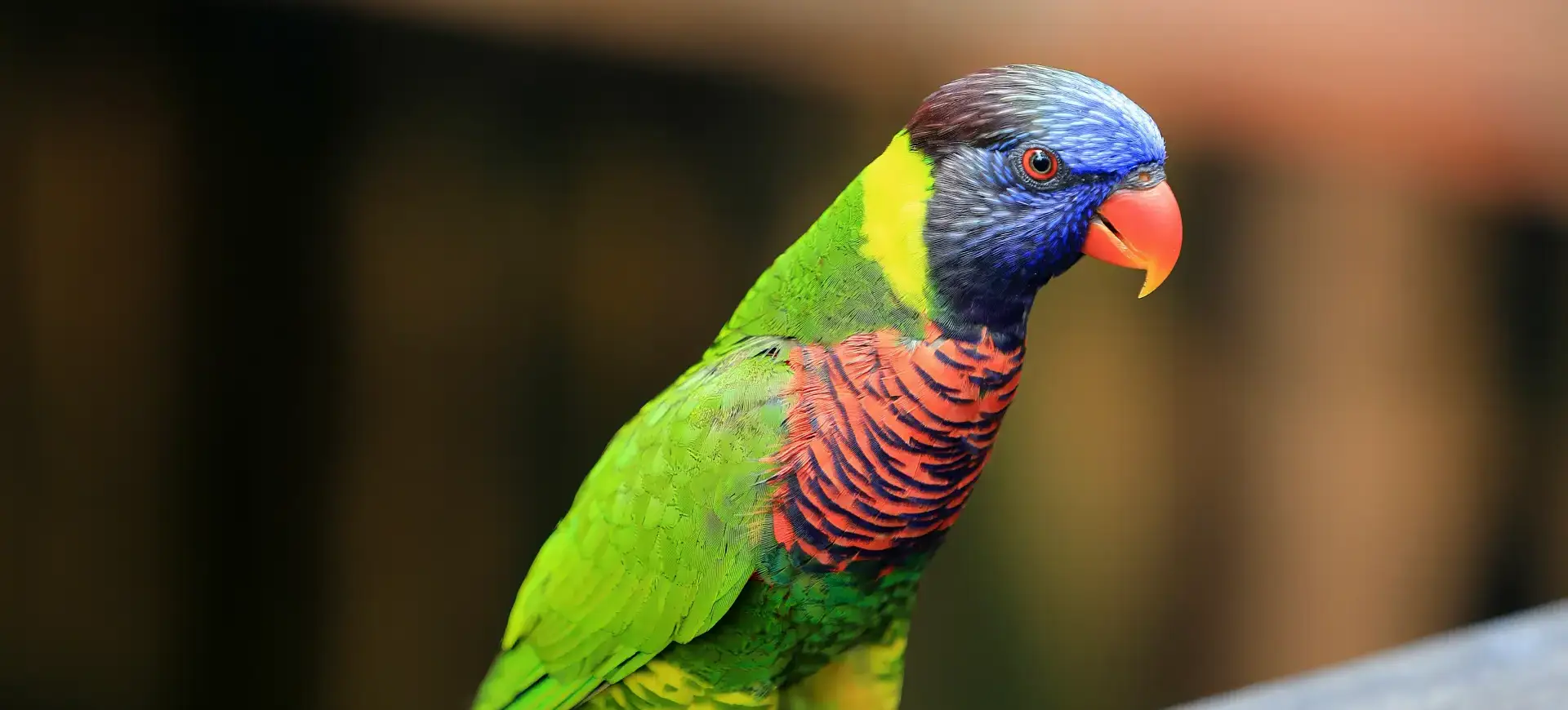Overview
The Rainbow Lorikeet, with its scientific name Trichoglossus moluccanus, is a vibrant and colorful bird belonging to the parrot family. Known for their bright blue, green, yellow, and red plumage, these birds are easily recognizable and are a favorite among bird watchers. They inhabit a wide range of wooded environments, including rainforests, coastal bushlands, and urban areas, adapting well to human presence. Rainbow Lorikeets are social creatures, often seen in pairs or small flocks, and their loud, chirpy calls and playful behaviors are a common sight in their native habitats.
Rainbow Lorikeets have a unique diet primarily consisting of nectar and pollen, which they obtain using their specialized brush-tipped tongues. This adaptation allows them to feed from a variety of flowers, making them important pollinators in their ecosystems. They also consume fruits, seeds, and occasionally insects, showcasing their versatile feeding habits. Their feeding behavior plays a crucial role in the pollination of many native plants, thus contributing significantly to the health of their habitats.
The breeding season of the Rainbow Lorikeet sees them forming monogamous pairs, with both parents involved in nest building, incubation, and feeding of the young. They usually nest in hollows of trees lined with wood chips or decayed wood. The female typically lays two to three eggs per clutch, which are incubated for around 25 days. The chicks are altricial at birth, meaning they are born blind and featherless, relying completely on their parents for warmth and nourishment until they fledge.
Taxonomy
Kingdom
Phylum
Class
Order
Family
Genus
Species
Type
Physical Description:
Rainbow Lorikeets are distinguished by their vivid plumage, featuring deep blue heads and bellies, green wings, tails, and back, and a bright red chest and face. Adults typically measure between 25 and 30 cm in length, including the tail, making them one of the more conspicuous species of their habitat. Their beaks are orange-red, designed for their specialized diet, and a narrow, unfeathered band surrounds their eyes. The sexual dimorphism in these birds is minimal, with both sexes displaying the same coloration and size, making it difficult to distinguish males from females visually.
These birds are known for their agility, capable of fast and acrobatic flight, which they utilize both in the wild and urban environments to navigate through trees and between feeding sites. Their strong, grasping feet and claws allow them to maneuver and feed while hanging upside down from branches. The lifespan of a Rainbow Lorikeet can vary, with wild individuals living up to 20 years, while those in captivity can live longer due to the absence of predators and access to regular nutrition. The health and vitality of these birds are evident in their active social behavior and loud vocalizations, making them a lively addition to their ecosystems.

Lifespan: Wild: ~15 years || Captivity: ~20 years

Weight: Male: 2.6-5.6 oz (75-160 g) || Female: 2.5-5.5 oz (70-155 g)

Length: Male: 10-12 inches (25-30 cm) || Female: 10-12 inches (25-30 cm)

Wingspan: Male & Female: 17-20 inches (43-50 cm)

Top Speed: 40 mph (64 km/h)
Characteristic:
Native Habitat:
Rainbow Lorikeets are native to Australia, particularly along the eastern seaboard, extending from Queensland to South Australia and into Tasmania. They inhabit a wide range of forested environments, including rainforests, coastal bushlands, and woodlands, as well as urban areas with abundant flowering trees and shrubs. Their adaptability to different environments has allowed them to thrive in natural and human-modified landscapes. The presence of water bodies, such as rivers and wetlands, also plays a crucial role in their habitat selection, providing them with necessary resources for survival.
The adaptability of Rainbow Lorikeets to urban environments has led to increased sightings in cities and suburban areas, where they are attracted to gardens and parks with flowering plants. While beneficial for the birds regarding food resources, this adaptability poses challenges, including the risk of collisions with windows and vehicles and potential conflicts with humans over fruit crops. Conservation efforts focus on maintaining and restoring natural habitats to support wild populations and educating the public on responsible interactions with these colorful urban visitors.
Biogeographical Realms:
Continents:
Countries:
Diet:
Diet & Feeding Habits:
Rainbow Lorikeets are primarily nectarivores, feeding on the nectar from various species of flowers using their specialized brush-tipped tongues. This unique adaptation allows them to extract nectar efficiently, making them important pollinators for many flowering plants. Besides nectar, they also consume fruits, seeds, and occasionally small insects, demonstrating a versatile diet that can vary depending on the availability of food sources in their environment. Their feeding habits contribute significantly to the dispersal of seeds and the pollination of flowers, aiding in the biodiversity of their habitats.
In urban areas, Rainbow Lorikeets are often seen visiting bird feeders, where they feed on offered fruits and specially formulated nectar substitutes. However, feeding lorikeets artificial food can disrupt their natural diet and feeding behaviors, leading to health issues and dependence on human-provided food sources. It’s important for people to be mindful of the impacts of feeding wildlife and to ensure that any food offered is appropriate for their natural diet. Conservation efforts encourage the preservation of natural habitats to support the lorikeets’ feeding needs and maintain the ecological balance.
Mating Behavior:
Mating Description:
Rainbow Lorikeets form monogamous pairs that last for life, exhibiting strong pair bonds through mutual grooming and shared feeding behaviors. During the breeding season, which varies depending on their geographic location but generally occurs in spring and summer, these pairs engage in elaborate courtship displays, including aerial acrobatics and loud calls. Nesting typically takes place in tree hollows, where the female lays 1-3 eggs. Both parents share responsibilities for incubating the eggs and feeding the chicks, demonstrating a high level of parental care.
The chicks hatch after an incubation period of about 25 days and are altricial, meaning they are born featherless and blind, completely dependent on their parents for warmth, protection, and food. The young lorikeets spend several weeks in the nest being fed a diet of regurgitated food by both parents until they are ready to fledge. Fledging occurs approximately 8 weeks after hatching, at which point the young birds begin to explore their surroundings and learn to feed on their own. The extended care provided by the parents ensures that the fledglings have a high chance of survival into adulthood.
Reproduction Season:
Birth Type:
Pregnancy Duration:
Female Name:
Male Name:
Baby Name:
Social Structure Description:
Rainbow Lorikeets are highly social birds that form strong bonds with their mates and often interact with other lorikeets in flocks. These flocks can be observed feeding together in the canopy of flowering trees, where their social interactions, including playful chasing and communal roosting, are a common sight. The social structure of lorikeet populations facilitates the sharing of information about food sources and potential threats, enhancing their ability to survive in diverse environments.
Rainbow Lorikeets may form larger flocks in urban areas due to the abundance of food sources, such as flowering trees in parks and gardens. These gatherings provide opportunities for social interaction and mating, but they can also lead to resource conflicts. Understanding the social dynamics of these birds is important for managing their populations in urban environments and ensuring that human activities do not negatively impact their social behavior.
Groups:
Conservation Status:
Population Trend:
Rainbow Lorikeets are currently listed as Least Concern by the IUCN, reflecting their wide distribution and stable population numbers. They are common in much of their range, benefiting from their ability to adapt to wild and urban environments. Despite this, local populations may be affected by habitat loss, pollution, and, in some cases, the illegal pet trade. Ongoing monitoring and research are essential to understanding their populations’ long-term trends and ensuring that their conservation status remains stable.
Efforts to conserve Rainbow Lorikeet populations include habitat protection and restoration, especially in areas where development threatens their natural habitats. Public education campaigns also play a crucial role in conservation, teaching communities about the ecological importance of lorikeets and how to coexist with them in urban areas. These initiatives, combined with legal protection against poaching and habitat destruction, are key to maintaining healthy populations of Rainbow Lorikeets in the wild.
Population Threats:
The primary threats to Rainbow Lorikeet populations include habitat loss due to urbanization, deforestation, and agricultural expansion. These activities can reduce the availability of suitable nesting sites and food sources, impacting lorikeet populations. Additionally, pesticides and herbicides in both agricultural and urban settings can harm these birds directly or reduce the availability of their food sources. The illegal pet trade also poses a threat, with birds being captured for sale domestically and internationally.
Climate change is an emerging threat that could affect the distribution and availability of the flowering plants lorikeets rely on for food. Changes in weather patterns, such as increased frequency and severity of droughts or storms, could also impact their habitats and food sources. Conservation efforts that address these threats are crucial for the future survival of Rainbow Lorikeet populations, requiring coordinated actions from governments, conservation organizations, and local communities.
Conservation Efforts:
Conservation efforts for Rainbow Lorikeets include habitat preservation and restoration initiatives that aim to protect and enhance the natural environments these birds depend on. Programs that reduce the impact of urbanization, such as establishing green spaces and wildlife corridors in cities, are also important. Legislation that protects these birds and their habitats from destruction and degradation is crucial, as is the enforcement of laws against the illegal pet trade.
Education and public awareness campaigns help promote coexistence between humans and lorikeets, especially in urban areas where frequent interactions occur. These campaigns often focus on not feeding wild lorikeets inappropriate foods, which can lead to health issues and dependency on human-provided resources. Conservation organizations also engage in research to better understand the needs of lorikeet populations and the most effective strategies for their protection.
Additional Resources:
Fun Facts
- Rainbow Lorikeets have a specialized tongue tipped with tufts of papillae, which soak up nectar like a sponge.
- They are known for their playful behavior, including hanging upside down and swinging from branches.
- Lorikeets can mimic human speech and sounds, making them popular pets.
- Their bright colors provide camouflage among their environment’s colorful flowers and fruits.
- Unlike many other bird species, lorikeets are monogamous and pair for life.
- They play a crucial role in their ecosystems as pollinators, especially of native Australian trees.
- Rainbow Lorikeets are excellent flyers, capable of rapid, agile flight maneuvers.
- They have a high metabolism due to their nectar-based diet, requiring them to feed frequently throughout the day.
- In some urban areas, lorikeets are considered pests due to their fondness for fruit crops and loud calls.
- Conservation efforts for lorikeets often focus on preserving natural habitats and educating the public on responsible feeding practices.












